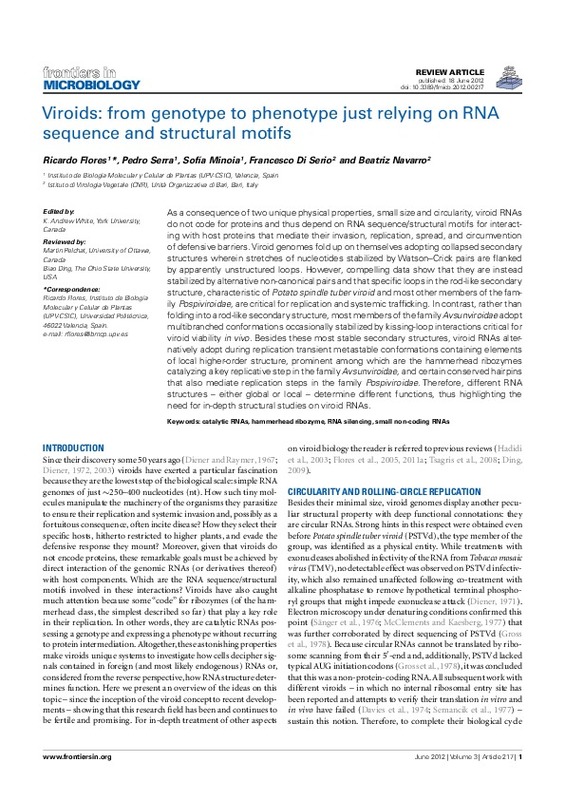JavaScript is disabled for your browser. Some features of this site may not work without it.
Buscar en RiuNet
Listar
Mi cuenta
Estadísticas
Ayuda RiuNet
Admin. UPV
Viroids: from genotype to phenotype just relying on RNA sequence and structural motifs
Mostrar el registro completo del ítem
Flores Pedauye, R.; Serra Alfonso, P.; Minoia, S.; Di Serio, F.; Navarro, B. (2012). Viroids: from genotype to phenotype just relying on RNA sequence and structural motifs. Frontiers in Microbiology. 3:217-1-217-13. https://doi.org/10.3389/fmicb.2012.00217
Por favor, use este identificador para citar o enlazar este ítem: http://hdl.handle.net/10251/67810
Ficheros en el ítem
Metadatos del ítem
| Título: | Viroids: from genotype to phenotype just relying on RNA sequence and structural motifs | |
| Autor: | Minoia, Sofia Di Serio, Francesco Navarro, Beatriz | |
| Entidad UPV: |
|
|
| Fecha difusión: |
|
|
| Resumen: |
[EN] As a consequence of two unique physical properties, small size and circularity, viroid RNAs do not code for proteins and thus depend on RNA sequence/structural motifs for interacting with host proteins that mediate ...[+]
|
|
| Palabras clave: |
|
|
| Derechos de uso: | Reserva de todos los derechos | |
| Fuente: |
|
|
| DOI: |
|
|
| Editorial: |
|
|
| Versión del editor: | http://dx.doi.org/10.3389/fmicb.2012.00217 | |
| Código del Proyecto: |
|
|
| Agradecimientos: |
We thank Dr. J. A. Daros for critical reading and suggestions, Dr. B. Ding for kindly providing Figures 4 and 5, and Dr. M. de la Pena for kindly providing Figure 6. Research in Ricardo FLores laboratory is presently ...[+]
|
|
| Tipo: |
|









